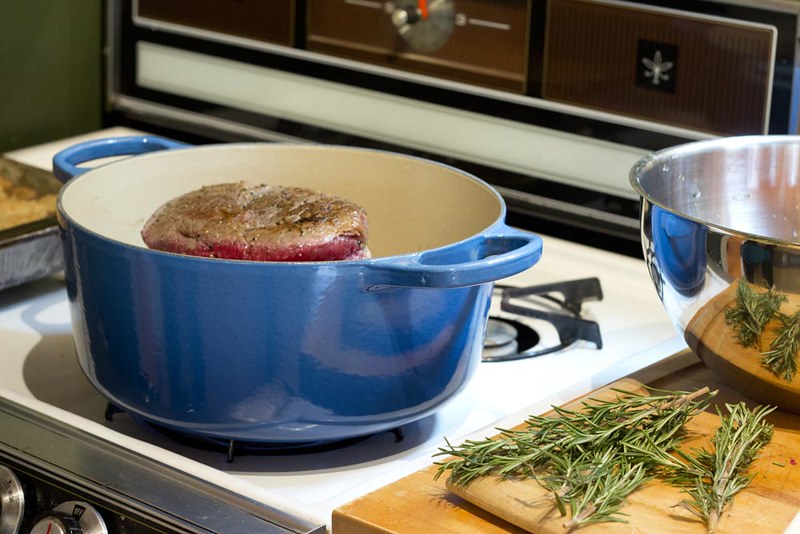The key difference between a French oven and a Dutch oven is that a French oven has an enamel coating, whereas a Dutch oven doesn’t have this coating. Dutch ovens and French ovens are versatile cooking vessels suitable for a wide range of cooking methods, including stovetops, ovens, and even campfires. Both are strong, cast-iron pots that come with tight-fitting lids. Although both these pots are very similar, there is a distinct difference between French oven and Dutch oven.
Key Takeaways
- The main difference between a French oven and a Dutch oven is the enamel coating present in French ovens, which is absent in Dutch ovens.
- Both Dutch ovens and French ovens are made from cast iron and come with tight-fitting lids for efficient cooking.
- French ovens do not require seasoning due to their enamel coating, while Dutch ovens need regular seasoning to maintain their cooking surface and prevent rusting.
What is a Dutch Oven?
Despite its name, the Dutch oven isn’t of Dutch origin but rather an English invention attributed to Abraham Darby’s patent in 1707. The term “Dutch oven” emerged from Darby’s observation of Dutch craftsmen who utilized sand to mold brass for premium cookware. Darby sought to create an affordable alternative, resulting in a Dutch oven crafted from economical iron, which paved the way for the cast iron Dutch ovens that we recognize today.
Also known as a casserole dish in international terms, a Dutch oven is a strong cooking pot featuring a tightly fitting lid. Typically, these ovens are made from seasoned cast iron, although alternatives made from cast aluminum or ceramic are also available. Dutch ovens can effectively trap condensation during cooking. This not only accelerates cooking times but also maintains the moisture content of the food, thereby enhancing flavors.
Raw cast iron Dutch ovens require a process known as “seasoning” before use. This involves enhancing the cooking surface’s resistance to sticking and protecting it from rust. A properly maintained Dutch oven is a versatile cooking vessel suitable for use on stovetops, ovens, and even campfires.
What is a French Oven?
A French oven is a variant of the cast iron Dutch oven that features a porcelain enamel coating. Originating in the early 1900s, this enameled layer significantly enhanced the stick-resistant qualities of the already robust and versatile Dutch oven. Referred to locally as a “cocotte,” the French oven was ideal for popular recipes of that era, such as boeuf bourguignon, where the initial browning of meat on the stove was followed by transferring the dish to the oven for completion.
Moreover, the enamel coating removed the need for seasoning, making these modern Dutch ovens more user-friendly and enabling a diverse spectrum of charming colors. While French ovens are generally round in shape, advancements in casting technology have broadened the array of shapes, including oval, square, heart-shaped, and even whimsical forms like pumpkins.
What are the Similarities Between French Oven and Dutch Oven?
Dutch ovens and French ovens are versatile cooking vessels suitable for a wide range of cooking methods, including stovetops, ovens, and even campfires.
Both are crafted from cast iron, known for its excellent heat retention and distribution.
Both come with a tightly fitting lid that helps trap moisture and flavors during cooking.
What is the Difference Between French Oven and Dutch Oven?
A Dutch oven is a traditional cast iron cooking pot, while a French oven is basically a Dutch oven with an enamel coating. Thus, this is the key difference between French oven and Dutch oven. This enamel coating in French ovens eliminates the need for seasoning, making maintenance easier. However, Dutch ovens, which don’t have an enamel coating, have to be seasoned regularly. In addition, this coating also makes French ovens more stick-resistant.
Summary – French Oven vs. Dutch Oven
The key difference between French oven and Dutch oven is their coating. French ovens have an enamel coating, whereas Dutch ovens don’t have this coating. Moreover, Dutch ovens have to be seasoned regularly since they don’t have a coating, but French ovens don’t need seasoning.
